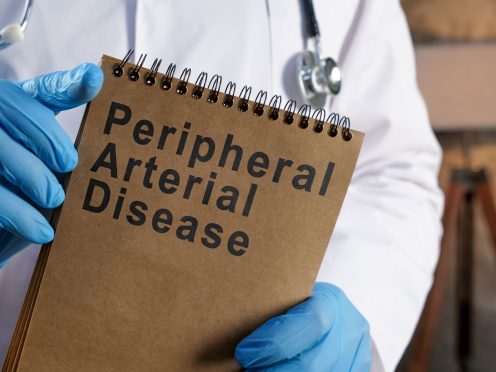It’s easy to dismiss achiness in the legs and feet as overworked muscles or arthritis, but in almost 10 million Americans, the symptom signals something much more serious and life-threatening.
When fatty plaque deposits collect in the arteries that supply blood throughout the body, causing partial or complete blockages, it turns into peripheral artery disease (PAD). The condition can cause heart attack, stroke and circulation issues that can make wounds harder to heal and lead to limb amputations.
“The long-term effects of peripheral artery disease can be very serious, but almost half of people with it may not experience any noticeable symptoms,” said Akhilesh Jain, MD, a vascular surgeon with the Hartford HealthCare Heart & Vascular Institute and chief of vascular surgery at Hartford Hospital.
> Connect with a vascular surgeon
Seeing the signs
You might want to check with your primary care provider, he said, if you notice:
- Coldness in one leg or foot, especially when compared with the other side.
- Weak or no pulse in the legs or feet.
- Painful cramping in one or both hips, thighs or calves after walking or climbing stairs.
- Shiny skin on the legs.
- Slow or poor healing of foot wounds.
> Want more health news? Text StartHere to 85209 to sign up for text alerts
Decreasing my risk
Patients with longstanding diabetes or chronic kidney disease or smokers are particularly prone to developing PAD and its complications. Factors raising your individual risk for developing PAD, he said, include:
- Having other conditions such as diabetes, high blood pressure, high cholesterol or heart disease.
- Being age 65 or older.
- Being overweight.
- Having a family history of PAD or arterial disease.
- Smoking.
I’ve been diagnosed with PAD – now what?
The first step is to consult with a vascular surgeon, who can provide further evaluation using non-invasive tests such as ankle-brachial index or ultrasounds. For most patients, the treatment for PAD can be as simple as taking blood thinners and cholesterol-lowering medications.
Other treatments include minimally-invasive procedures such as leg angioplasty and stenting to open up narrowed arteries and improve blood flow, Dr. Jain said. In some situations, the patients may need a vascular bypass to improve wound healing.
Vascular surgeons are experts in every aspect of PAD management and also provide the much-needed longitudinal care to decrease long-term complications. One of the primary goals of managing advanced PAD, Dr. Jain said, is to prevent amputation prevention and maintain function. About 25% of patients with advanced PAD are at risk of needing an amputation.
The experts at the Hartford HealthCare Advanced Wound Care and Hyperbaric Medicine Centers, with locations around the state, are able to work with Dr. Jain and other vascular specialists to prevent amputation when possible and help maintain function.
“Specialized care provided by wound care specialists can reduce healing times, increase healing rates and significantly lower amputation risks,” Dr. Jain said.



